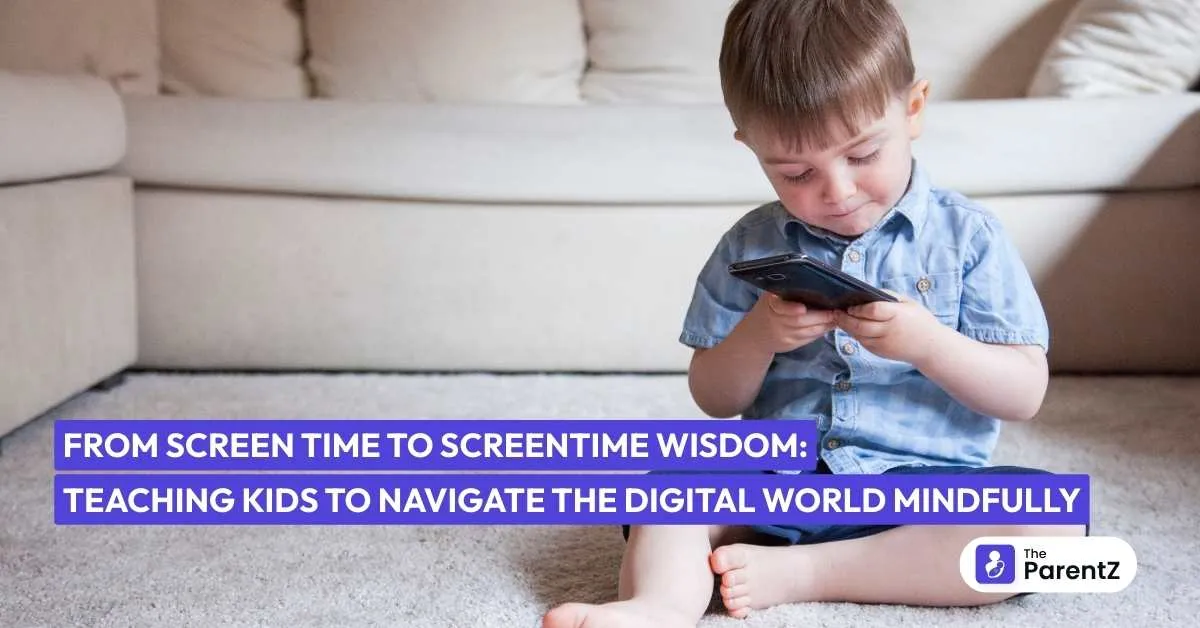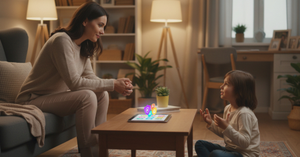Introduction
Let’s be honest—screens are part of childhood now. From YouTube to online classrooms to digital art apps, our kids are growing up in a world where swiping, tapping, and streaming are second nature.
And no, the answer isn’t to wage war against screen time. The goal isn’t to eliminate screens—it’s to raise kids who know how to use them with awareness. To raise thinkers, not just scrollers.
So, how do we do that?
It starts with understanding the world they’re navigating—and showing them how to navigate it better.
The Digital Trap (And Why It’s Hard to Escape)
Most platforms aren’t built to teach—they’re built to keep attention.
Algorithms aren’t designed to ask: “Is this good for your child’s brain?” They’re designed to ask: “Will this keep them watching?”
That’s why kids can fall into hours of endless reels, flashy animations, or gaming loops. Not because they’re lazy. Because they’re wired to be curious, and the system is wired to hook them.
And without guidance, that curiosity gets hijacked.
What Screentime Wisdom Looks Like
Teaching kids about screens isn’t just about putting a timer on the tablet. It’s about building a mindset. One that helps them recognize the purpose of what they’re watching—not just the habit of doing it.
Here’s what that wisdom looks like:
- Purpose over habit: Is your child learning something? Creating something? Or just filling time?
- Balance over bans: It’s more effective to offer meaningful alternatives than to just say “no.”
- Awareness over addiction: Help them notice how their body and brain feel after certain types of content.
Screens aren’t just about what they’re watching—they’re about how they feel when they watch.
Practical Tips for Parents
You don’t need to be tech-free to raise screen-smart kids. Here are a few small changes that make a big impact:
- Set intentional tech time: Designate one hour for play, one for creativity. Keep it predictable but flexible.
- Ask better questions: Instead of “How long were you on your iPad?” try “What was your favorite part of what you watched?”
- Model what you want to see: If your phone’s always in your hand, they’ll see that as the norm. Show them breaks, boredom, and balance.
Kids often learn less from what we say—and more from how we scroll.
Teach Them to Think Before They Tap
Digital discernment is the superpower kids need now.
Help them ask questions like:
- “Why did that video make me feel good—or weird?”
- “Is this actually true, or just designed to grab attention?”
- “Would I still like this if no one else saw it?”
These small moments of reflection are what transform passive content consumers into active, mindful users.
Conclusion
Screens aren’t the enemy. Thoughtless scrolling is.
When we shift the focus from control to connection, from rules to reasoning, we raise kids who don’t just survive in a digital world—they learn to lead in it.
So let’s stop fighting the screen—and start teaching our kids how to own it.








Be the first one to comment on this story.